[/caption]
There are some great images of Wednesday’s Ares I-X launch. Most notable is this one of the Prandtl–Glauert singularity bow shock that formed around the 327-foot-tall rocket as it went supersonic at about 39 seconds into the flight. Liftoff of the 6-minute flight test from Launch Pad 39B at NASA’s Kennedy Space Center in Florida was at 11:30 a.m. EDT Oct. 28. This was the first launch from Kennedy’s pads of a vehicle other than the space shuttle since the Apollo Program’s Saturn rockets were retired. See more great images below.
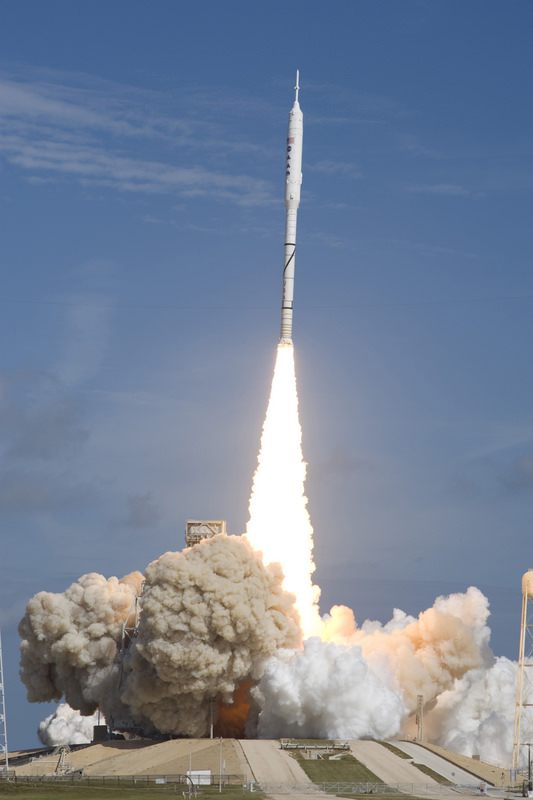
With more than 12 times the thrust produced by a Boeing 747 jet aircraft and 23 times the power output of the Hoover Dam, the Ares I-X test rocket produces 2.96 million pounds of thrust at liftoff. Interestingly, the Ares I-X booster was put together with parts from shuttle boosters that flew on 30 different shuttle missions ranging from STS-29 in 1989 to STS-106 in 2000. Ares I-X weighed 1.8 million pounds, almost twice that of a full 747 airliner.
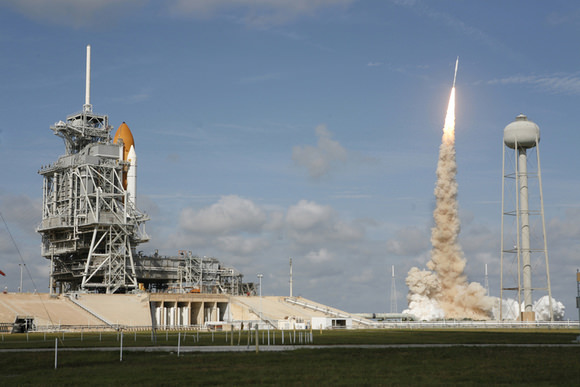
KSC is a busy spaceport, with the Ares I-X launching and space shuttle Atlantis poised on Launch Pad 39A for liftoff, targeted for Nov. 16. The Ares 1-X is nearly 143 feet taller than the space shuttle stack.
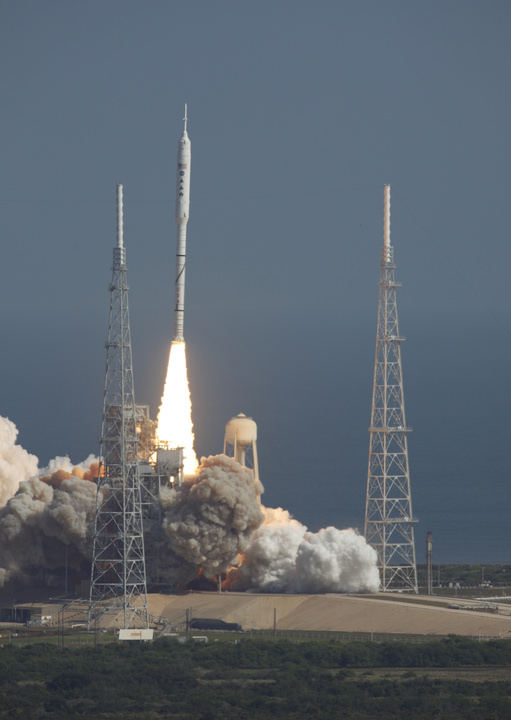
The data returned from more than 700 sensors throughout the rocket will be used to refine the design of future launch vehicles and bring NASA one step closer to reaching its exploration goals.
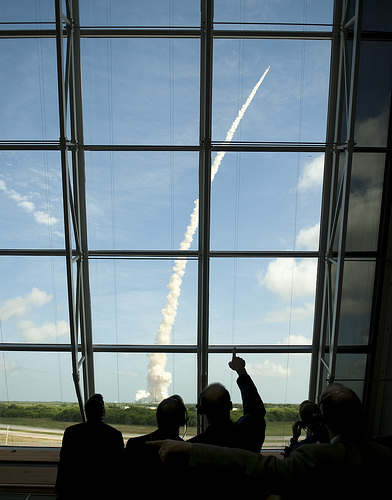
NASA Ares I-X mission managers watch from mission control as the Ares I-X rocket launches.
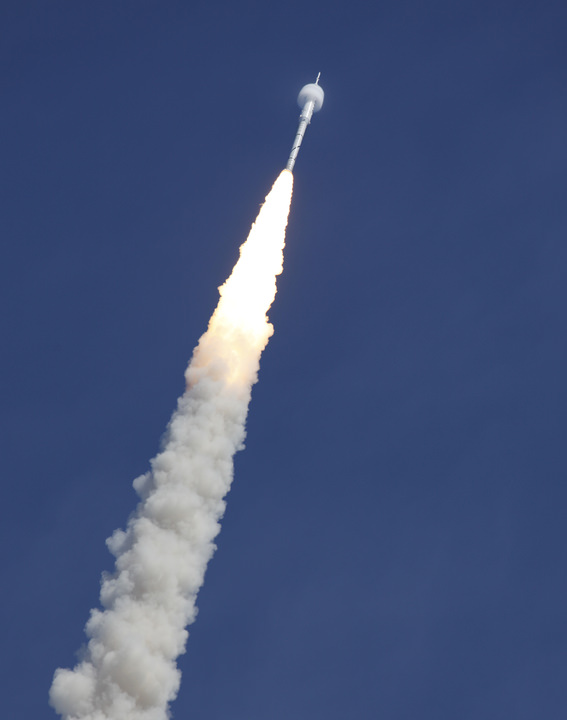
Here’s the full shot from the lead image showing the Prandtl–Glauert singularity, and here’s Wikipedia’s definition:
“The Prandtl–Glauert singularity or P.G. singularity is sometimes referred to as a vapor cone, shock collar, or shock egg.
The point at which a sudden drop in air pressure occurs is generally accepted as the cause of the visible condensation cloud that often surrounds an aircraft traveling at transonic speeds, though there remains some debate. It is an example of a mathematical singularity in aerodynamics.”
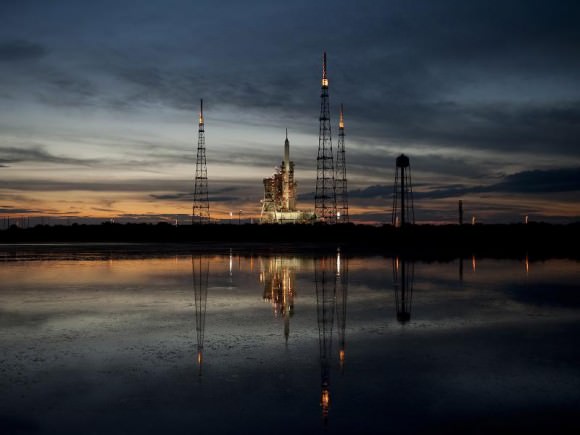
This is a gorgeous shot of the Ares I-X on the pad on an evening before launch.
For information on the Ares I-X vehicle and flight test, visit NASA’s website.

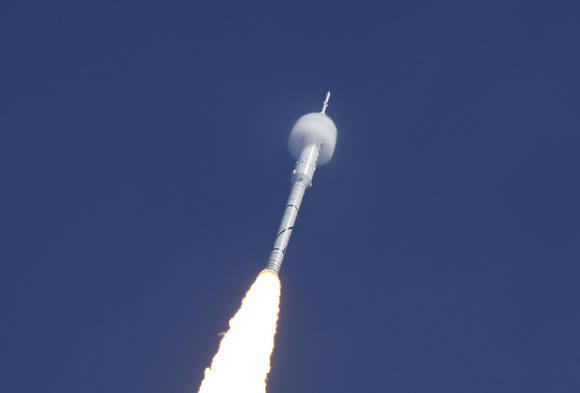
I don’t want to sound pedantic, but that is not a bow shock, it is a Prandtl-Glauert singularity following an oblique shock.
bow shocks form in front of blunt bodies, but Ares I can hardly be called blunt!
andre- You’re right! The post has been updated.
Managed to catch it online yesterday – just before I woulda got tired of waiting.
Gorgeous!
Such a pity we’ll have to wait years to see more (if we’ll ever see it again at all).
Sili, lets hope it is not years….
How will a human survive this acceleration?
A fighter pilot is protected for this, but a
space crew? Will a spacesuit do?